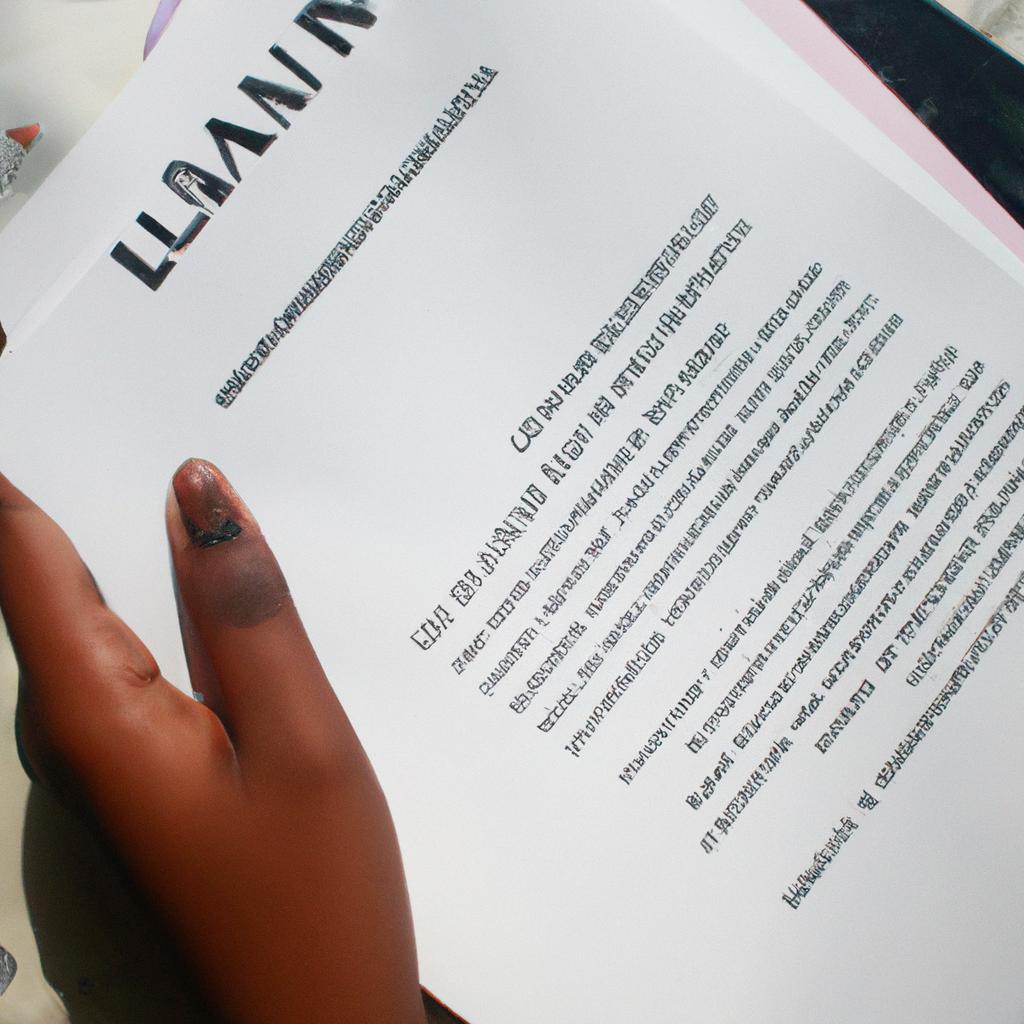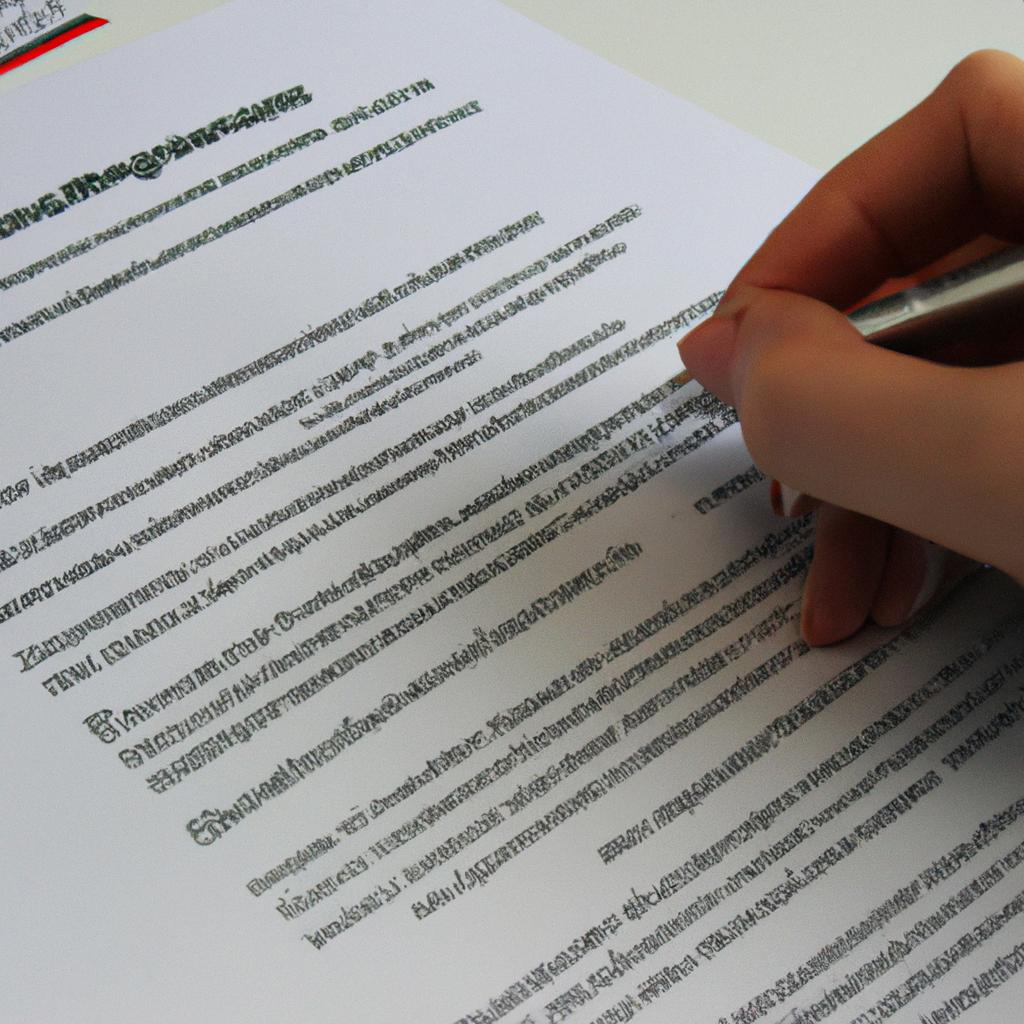The minimum down payment required for residence loans, specifically for villas and apartments, is a critical aspect that potential homeowners must consider. This requirement determines the initial amount of money that borrowers need to contribute towards purchasing their desired property. For instance, let us imagine Mr. Smith, an aspiring homeowner looking to acquire a villa in a suburban area. He has saved diligently over the years and now faces the decision of how much he should allocate as his down payment.
Understanding the significance of this matter is essential for individuals seeking financial stability through property ownership. The minimum required down payment serves as a safeguard for lenders against default risks while also influencing affordability for homebuyers. Moreover, it plays a vital role in shaping mortgage terms such as interest rates and loan durations. Therefore, comprehending the factors affecting these requirements becomes crucial in making informed decisions about real estate investments in both villas and apartments. In this article, we will explore the various aspects associated with determining minimum down payments for residential loans, shedding light on its implications for prospective buyers in different scenarios.
Understanding the concept of down payment
Understanding the Concept of Down Payment
To grasp the concept of down payment in residence loans, let us consider an example. Imagine a young couple, John and Sarah, who aspire to purchase their first home – a villa or apartment. They have diligently saved money for this purpose but are unsure about the exact amount they need to set aside as a down payment. This scenario is relatable as many individuals face similar uncertainties when embarking on the journey of homeownership.
A down payment refers to the initial sum of money paid upfront by buyers when purchasing residential properties. It serves multiple purposes, including reducing loan amounts and acting as collateral for lenders. The significance of understanding down payments lies in its role in determining affordability and financial stability for prospective buyers.
To emphasize the importance of comprehending down payments further, we can explore some emotional responses that potential homebuyers might experience:
- Anxiety: Uncertainty may arise regarding whether one has saved enough funds to make the required down payment.
- Excitement: Homeownership dreams become achievable once individuals understand how much they need to save towards a down payment.
- Motivation: Knowledge about minimum requirements can serve as motivation for individuals to prioritize saving and budgeting efforts.
- Confidence: Understanding down payments enables borrowers to confidently navigate through mortgage options and negotiate terms with lenders.
In addition to these emotional responses, it is helpful to analyze factors that determine the minimum required down payment. By doing so, potential purchasers can gain insights into what influences this crucial aspect of home buying.
Table: Factors Influencing Minimum Required Down Payment
| Factor | Description |
|---|---|
| Property Type | Different types of residences (villas vs apartments) often have varying minimum requirements due to factors such as market demand and property value. |
| Loan Type | Certain loan programs offer more flexibility than others, allowing borrowers to qualify for lower down payments based on specific criteria. |
| Credit Score | A higher credit score generally leads to more favorable loan terms, including potentially lower down payment requirements. |
| Lender Policies | Individual lenders may have varying policies that influence the minimum required down payment on residence loans. |
Understanding these factors helps potential homebuyers assess their financial readiness and make informed decisions when entering into mortgage agreements.
Transitioning seamlessly into the subsequent section about “Factors that determine the minimum required down payment,” it is crucial to consider how various aspects impact this essential element of purchasing a property. By examining these factors in detail, individuals can gain a deeper understanding of what influences the minimum amount they need to contribute as a down payment.
Factors that determine the minimum required down payment
Understanding the concept of down payment is essential when considering residence loans for villas and apartments. Now, let’s explore the factors that determine the minimum required down payment for such properties.
To illustrate this further, let’s consider a hypothetical scenario where an individual wishes to purchase a villa worth $500,000. The lender requires a 20% down payment before approving the loan. This means that the buyer would need to provide $100,000 upfront as their contribution towards the purchase price.
There are several factors that influence the minimum required down payment for residence loans, including:
-
Loan-to-Value Ratio (LTV): Lenders often use LTV to assess the risk associated with a loan. It represents the ratio between the loan amount and the appraised value of the property. A higher LTV indicates a greater risk for lenders, which may result in a higher down payment requirement.
-
Creditworthiness: Borrowers with stronger credit profiles are typically considered less risky by lenders. Those with excellent credit scores may be eligible for lower minimum down payments compared to individuals with lower credit scores.
-
Property Type: Different types of properties have varying degrees of perceived risk associated with them. For example, lenders might require higher down payments for investment properties compared to primary residences or vacation homes due to potential income volatility.
-
Government Regulations: In some cases, government regulations can dictate specific minimum down payment requirements for certain types of loans or borrowers. These regulations aim to maintain stability within the housing market and protect both buyers and lenders.
Consider these points while determining your own financial situation and how they relate to purchasing either a villa or an apartment:
| Factors | Villas | Apartments |
|---|---|---|
| Loan-to-Value Ratio | Typically higher | Generally moderate |
| Creditworthiness | Lower score may increase DP | Moderate score accepted |
| Property Type | High-end, luxurious | More affordable options |
| Government Regulations | Varies by jurisdiction | Varies by jurisdiction |
By understanding these factors and how they impact the minimum required down payment for residence loans, potential buyers can make informed decisions about their financial commitments.
Moving forward into our next section on “Minimum Down Payment Requirements for Villas,” we will explore specific considerations related to villa properties and the associated down payment requirements.
Minimum down payment requirements for villas
Factors that Determine the Minimum Required Down Payment
To illustrate how factors influence the minimum required down payment, let’s consider a hypothetical case. Mr. Smith is interested in purchasing a villa worth $500,000. Based on his financial profile and loan terms, he falls under Category A for down payment requirements. Now, let’s explore the key factors that determine the minimum required down payment for villas.
Firstly, the loan-to-value ratio (LTV) plays a crucial role in determining the down payment amount. The LTV ratio represents the percentage of the property value that can be financed through a loan. For instance, if the bank allows an 80% LTV ratio for villas, Mr. Smith would need to provide a minimum down payment of 20% ($100,000) since he falls into Category A.
Secondly, creditworthiness has an impact on the minimum required down payment. Financial institutions assess borrowers’ credit histories to evaluate their ability to repay loans promptly and reliably. Borrowers with higher credit scores are often deemed less risky and might benefit from lower down payment requirements compared to those with lower scores.
Thirdly, national regulations or governmental policies related to real estate financing can influence the minimum required down payments for villas. These regulations aim to maintain stability in housing markets and prevent excessive borrowing by setting certain thresholds or guidelines for lenders to follow.
Lastly, individual circumstances such as income level and employment history may also affect the minimum required down payment for villas. Higher-income individuals with stable job positions might have more negotiating power when it comes to securing favorable loan terms and potentially reducing their initial investment.
Here is a bullet point list summarizing these factors:
- Loan-to-value ratio
- Creditworthiness
- National regulations/policies
- Individual circumstances (income level & employment history)
Now that we have explored these factors influencing the minimum required down payment for villas, we will delve into the specific requirements for apartments in the subsequent section. By understanding how these factors interact, potential homebuyers can make more informed decisions regarding their down payment obligations.
Next Section: Minimum Down Payment Requirements for Apartments
Minimum down payment requirements for apartments
Minimum down payment requirements for apartments differ from those for villas. While the previous section focused on villa loans, this section will delve into the specific guidelines applicable to apartment purchases. To illustrate these requirements effectively, let us consider a hypothetical scenario where an individual named John is interested in buying an apartment.
In general, lenders determine the minimum down payment based on various factors such as loan amount, credit score, and property type. When it comes to apartments, financial institutions typically require a higher down payment compared to villas due to perceived differences in risk. Let’s take a closer look at some key considerations:
-
Loan-to-Value Ratio (LTV): Lenders often calculate the LTV ratio to assess the risk associated with lending funds for an apartment purchase. A higher LTV ratio indicates that the buyer is borrowing a larger percentage of the total cost of the property. Consequently, lenders may demand a more substantial down payment to mitigate potential losses.
-
Mortgage Insurance: Depending on the lender’s policies and regulations within a particular region, mortgage insurance may be compulsory for borrowers who make lower down payments on apartment loans. This additional expense can significantly impact affordability and should be factored into one’s financial planning.
-
Location and Market Conditions: The location of an apartment plays a crucial role in determining its value and subsequent financing terms. In high-demand areas or markets experiencing rapid appreciation, lenders may enforce stricter down payment requirements to safeguard against potential market fluctuations.
-
Creditworthiness: Similar to villa loans, applicants’ credit scores are vital when seeking approval for apartment mortgages. Those with excellent credit histories are generally offered better interest rates but might still need to meet higher down payment thresholds.
To further emphasize these aspects visually, here’s a table highlighting average minimum down payment percentages for different types of apartments:
| Apartment Type | Minimum Down Payment Percentage |
|---|---|
| Studio | 20% |
| 1 Bedroom | 25% |
| 2 Bedrooms | 30% |
| 3+ Bedrooms | 35% |
This table serves as a useful reference to help potential buyers gauge the financial commitment required for their desired apartment size.
Considering these factors, it is evident that purchasing an apartment necessitates careful financial planning and saving. In the subsequent section, we will explore practical tips to assist individuals like John in effectively saving up for a down payment on their dream residence. Transitioning into this topic, let us now turn our attention to some essential strategies that can make owning an apartment more attainable.
Tips for saving up for a down payment
Minimum down payment requirements for apartments vary depending on the location, size, and price of the property. For example, let’s consider a hypothetical scenario where an individual is looking to purchase a two-bedroom apartment in a prime urban area. The average market value of such properties ranges from $300,000 to $500,000.
To meet the minimum down payment requirement for this apartment, potential buyers should be prepared to contribute at least 20% of the property’s purchase price. In our case study, this would amount to a down payment between $60,000 and $100,000. However, it’s important to note that these figures are approximate and can vary based on factors such as credit score and financial stability.
When saving up for a significant sum like this, it can often feel overwhelming. To help alleviate some of the stress associated with saving for a down payment, here are some useful tips:
- Establish a budget: Create a detailed budget outlining your monthly income and expenses. This will allow you to identify areas where you can cut costs and save more money towards your down payment.
- Set savings goals: Determine how much you need to save each month to reach your target down payment amount within your desired timeframe. Breaking it down into smaller goals makes it easier to track progress and stay motivated.
- Explore alternative sources of income: Consider taking on part-time work or freelancing opportunities to supplement your regular income. Every additional dollar earned brings you closer to achieving your down payment goal.
- Reduce discretionary spending: Cut back on nonessential expenses such as dining out or entertainment activities. Allocating those funds toward your savings instead will expedite your ability to gather the necessary funds.
Additionally, understanding the benefits of homeownership compared to renting may further motivate individuals when saving for their dream home. Here is a table highlighting some advantages of owning an apartment rather than renting:
| Advantages of Owning | Advantages of Renting | Financial Benefit |
|---|---|---|
| Building equity | Flexibility | Potential tax savings |
| Stability and security | Minimal responsibility | No upfront costs |
| Freedom to personalize | Lower maintenance costs | |
| Long-term investment potential | No property value risk |
Exploring alternative financing options can also be beneficial for those who may find it challenging to meet the minimum down payment requirement. The subsequent section will delve into various avenues individuals can explore to secure residence loans, allowing them to achieve their homeownership dreams without immediate substantial financial commitments.
Transitioning into the next section about “Exploring alternative financing options,” let’s now discuss how individuals can navigate these routes while considering their unique circumstances and preferences.
Exploring alternative financing options
Section 3: Exploring alternative financing options
Transitioning from the previous section on saving up for a down payment, let us now shift our focus towards exploring alternative financing options that can assist prospective homeowners in achieving their goal of purchasing a residence. One such option is seeking financial support through government-backed loan programs, which provide assistance to individuals who may not be able to meet the minimum required down payment amount. To illustrate this, consider the case study below.
Case Study:
Sarah and John are a young couple aspiring to buy their first home but find it challenging to save up enough money for the down payment. They have been diligently putting aside a portion of their income each month, but still fall short of the required amount. Frustrated by this setback, they decide to explore alternative financing options available in their country.
- Government-Backed Loan Programs: In many countries, governments offer various loan programs aimed at assisting individuals with limited financial resources in purchasing homes. These programs often feature lower down payments and more lenient eligibility criteria compared to traditional loans offered by banks or private lending institutions.
- Down Payment Assistance Programs: Some organizations and nonprofits provide down payment assistance grants or loans to help potential buyers bridge the gap between their savings and the required down payment amount. These programs typically target low-income households or specific demographic groups.
- Seller Financing: In certain cases, sellers may be willing to finance part or all of the purchase price themselves if buyers are unable to secure sufficient funds for a conventional down payment. This arrangement allows buyers to make monthly installment payments directly to the seller instead of relying solely on bank financing.
- Shared Equity Agreements: Shared equity agreements involve partnering with an investor or housing organization that contributes towards your down payment in exchange for shared ownership of the property’s equity. This arrangement provides an opportunity for those struggling with upfront costs while sharing future profits or losses when the property is sold.
To further understand the potential benefits and drawbacks of these alternative financing options, let us refer to the following table:
| Financing Option | Pros | Cons |
|---|---|---|
| Government-Backed Loan Programs | – Lower down payment requirements- More lenient eligibility criteria | – Potential for higher interest rates |
| Down Payment Assistance Programs | – Grants or loans available to bridge financial gap – Designed for low-income households | – Limited availability in some regions |
| Seller Financing | – Flexibility in terms of payment arrangements- No need for traditional bank approval | – Sellers may charge higher interest rates |
| Shared Equity Agreements | – Access to homeownership with lower upfront costs- Sharing future profits or losses | – Loss of full ownership control |
In conclusion, exploring alternative financing options can provide a pathway towards homeownership for individuals who are struggling to meet the minimum required down payment. By considering government-backed loan programs, down payment assistance programs, seller financing, or shared equity agreements, prospective buyers can find solutions that align with their unique financial circumstances and help them achieve their dream of owning a residence.
Please note: The information provided above is intended as general guidance and should not be considered as professional financial advice. It is recommended to consult with a qualified financial advisor or mortgage specialist before making any decisions regarding home financing.
 Villas In Florence
Villas In Florence



